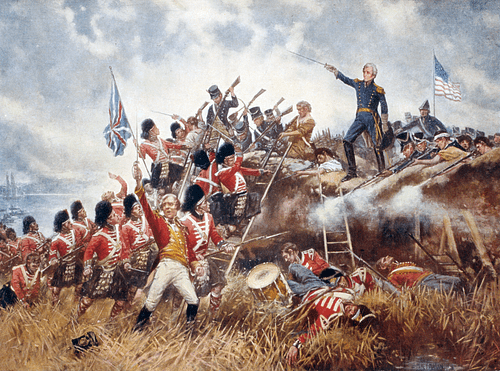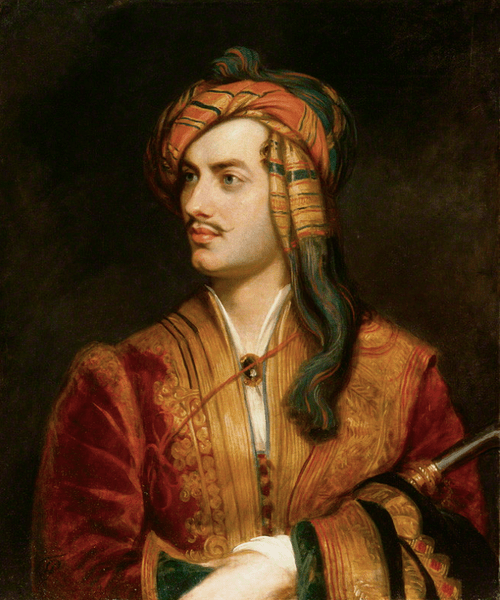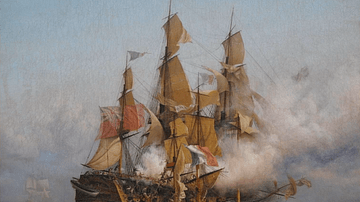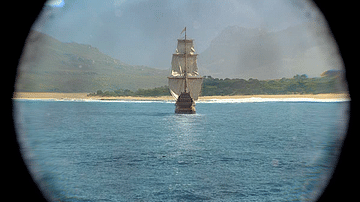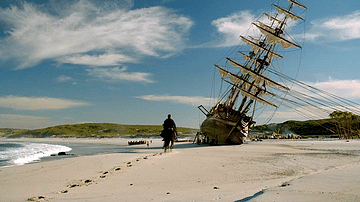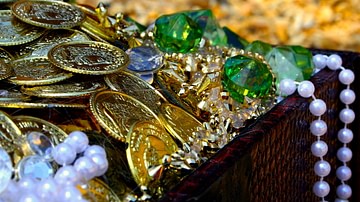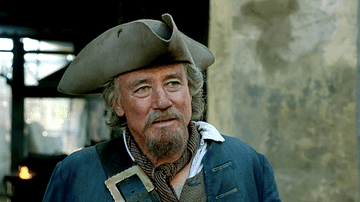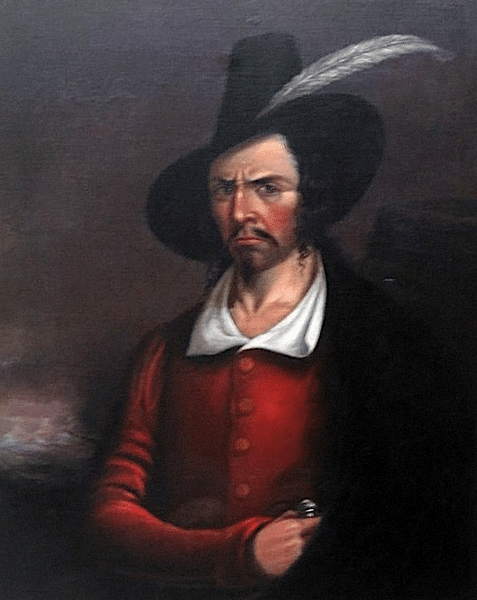
Jean Lafitte (also spelt Laffite, c. 1780 to c. 1820 CE) was a Franco-American leader of pirates and privateers who captured merchant vessels of various states in the Gulf of Mexico from 1810 to 1820. Lafitte proved an invaluable ally for the United States in the War of 1812 and the 1815 Battle of New Orleans, assisting General Andrew Jackson (1767-1845) to victory against the British.
Lafitte was given an official pardon by the U.S. President in thanks for his useful participation in the ongoing wars with Britain and Spain, but he would soon be back in the official black book. Returning to piracy from his base at what became Galveston, Texas, Lafitte caused havoc with Spanish and U.S. shipping. Aware that retribution would soon follow, Lafitte ultimately sailed off and away from the searching U.S. authorities to an unknown fate. Lafitte's story inspired many later writers, beginning perhaps with Lord Byron (1788-1824) who may have based The Corsair on the pirate-turned-patriot.
Early Life
Lafitte was born around 1780, probably in France, but very little can be said for certain about his early life. He must have gone to sea, for by 1809, he ended up working for a time with his brother Pierre as a blacksmith, or at least fronted such a business, in New Orleans. The forge and anvils likely concealed the pair's smuggling activities. The Lafitte boys fenced stolen goods and smuggled slaves into the state of Louisiana, the slave trade having been formally ended by the United States government in 1807. Jean Lafitte, though, had far bigger ambitions than this.
The historian Jan Rogozinski gives the following physical description of Lafitte: "Until later in life, he was a romantic figure - tall, slender, and handsome, with dark hair and eyes. He charmed numerous aristocratic women" (189).
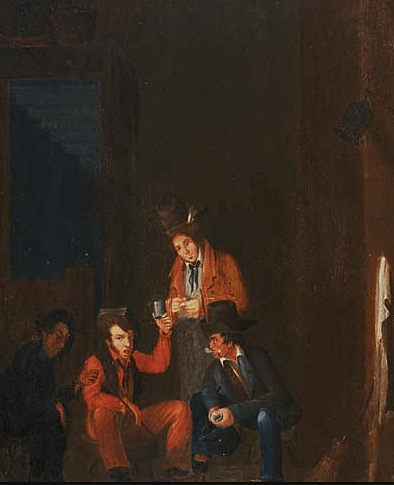
Piracy & Privateering
From around 1810, Lafitte made his base at the secluded Barataria Bay inlet, located to the south of New Orleans and the west of the Mississippi Delta. The location was ideal since the maze of shallow waterways and secret bayous made it very difficult for the authorities to search the area. On the other hand, it was close enough to New Orleans and merchants eager to get their hands on goods at a cheap price. From here Lafitte organised a large group of smugglers and pirates. There were also a number of privateers, those who acted as pirates but against a specific enemy of a particular state or colony. These privateers were given letters of marque either by French colonial governors in the Caribbean or from the authorities at the port of Cartagena (in today's Colombia) which had decided to declare independence from the Spanish Empire. The cargoes taken by Lafitte's motley gang were stored on Grand Terre Island, and the slaves were kept in pens or barracoons. Goods and people were then sold to specially invited Louisiana merchants and slave traders at secret auctions.
Commanding a fleet of at least ten ships, and still aided by his brother Pierre, Lafitte caused havoc in the Gulf of Mexico, masterminding the capture of British, American, and Spanish merchant ships. Lafitte's crews included "Yankees, Portuguese, Norwegians, Frenchmen, Creoles, Seminoles and Cajuns" (Konstam, 62). Lafitte himself was more of a pirate manager than a pirate himself. Indeed, when on shore, he hobnobbed with politicians, community leaders, and naval officers. He was known for hosting parties and for his fine manners. This flair for socialising did not impress somebody in authority, and the Lafitte brothers were finally arrested and put on trial in 1812. Having been released on bail, neither Jean nor Pierre put in an appearance at their trial, and by 1813, the Louisiana governor was calling for their immediate apprehension with a reward of $750. Not to be outdone, Jean Lafitte put a bounty on the governor's head, encouraging his men to apprehend the official with a $1500 reward. Lafitte remained at large, perhaps in no small part due to the willingness of otherwise legitimate traders to do business with the pirate chief who could offer them a steady stream of discount goods. In addition, the U.S. authorities were fully preoccupied with the war of 1812 (June 1812 – February 1815) between the United States and Spain, Britain, and its allies.
The War of 1812 & New Orleans
Lafitte was first approached by the British who realised that a man who commanded a large fleet could be a very useful ally in their war with the U.S. The British were impressed with how Lafitte managed to get through their blockade of the Mississippi Delta. In September 1814, Lafitte was offered various incentives to join the British side and help them in their proposed attack on New Orleans. He would be given an official naval rank (captain), suitable financial compensation ($30,000), and a pardon for his previous shady activities. Lafitte was not tempted, and he instead went to the authorities in New Orleans and told them what the other side was offering and of their planned attack. Lacking imagination, and blind to the events about to unfold, the New Orleans authorities did nothing to ensure Lafitte and his fleet were on their side in the conflict to come. Indeed, Governor W.C.C. Claiborne did the very opposite, and just two weeks later, the Barataria base was attacked by a U.S. naval force. A number of privateer ships in the harbour were captured, but Lafitte and most of his men escaped inland.
The situation then changed in New Orleans, with a new commander of the city's defences being appointed in December 1814, one General Andrew Jackson. Jackson had more vision than his predecessors, and he met with Lafitte to hear how the two could work together. Lafitte was duly given a pardon and a command: his own men organised into artillery units, thereafter known as the Baratarians. Lafitte's force, perhaps manning around 16 cannons, was an important factor in the defence of the city, what has become known as the Battle of New Orleans of 8 January 1815. The British attack with a numerically superior force was rebuffed. Following their invaluable aid, Lafitte and 1,000 of his men were, upon the recommendation of an impressed General Jackson, all given a pardon by President James Madison (in office 1809-1817). Unfortunately, Lafitte did not get back his property confiscated after the attack on his old base at Bayou Barataria, and this may have been the motive for his lapsing back into a life of crime.
Galveston & Death
By 1817, Lafitte and his 1,000 loyal men, who crewed some 20 ships, had returned to piracy, attacking merchant ships of the Spanish Empire. This time, the pirate chief chose Campeche as his base, an island that would become Galveston, Texas, in what was then an unstable and much-disputed Spanish province. Lafitte took advantage of the volatile local politics that involved U.S., Spanish, Texan, and Mexican interests, to become the town's governor in 1819. Galveston was an excellent choice since it offered many inland waterways via which the pirates could escape any naval ships taking too great an interest in the coast. From 1817, Galveston was the main pirate haven in the region.
Lafitte and his pirates profited from selling on captured cargoes and smuggling arms and slaves to whoever wanted to buy. Lafitte then pushed his luck too far when he began to attack U.S. merchantmen. The attacks on Louisiana to grab slaves was another get-rich-quick scheme that carried inevitable consequences.
The United States did send a warship to Galveston to investigate what exactly was going on in these waters, but Lafitte, ever the silver-talking diplomat, managed to avoid any confrontation in November 1819. The pirate governor merely hanged one of his men who he claimed had been the ringleader of the pirate attacks, and this, for a time, satisfied everyone. Lafitte carried on regardless, and near Matagorda in 1820, his team captured and then scuttled a U.S. merchant ship. Forestalling an inevitable and more decisive second visit from the U.S. authorities in 1821 (or perhaps directly because of a warship passing the island), Lafitte wisely decided to take his best crew and sail off over the horizon in a single ship, the Pride. Before he left, he razed Galveston to the ground. Lafitte then pursued his life of piracy against Spanish targets, perhaps for a few more years, but his ultimate fate is not known. There were rumours he was buried near Mérida in Mexico, although this may have been his brother. The mysterious end to Lafitte's piracy and the idea that he may have escaped justice for his crimes immediately propelled him to legendary status as one of the last great pirates of the Americas.
Jean Lafitte in Fiction
Lafitte's colourful exploits led to him becoming a favourite figure for later fiction writers. Lord Byron got in early when he wrote the poem The Corsair, perhaps loosely based on Lafitte's life but set in the Aegean. If it is indeed based on Lafitte, Byron did not limit himself to very much historical accuracy in his poem published in 1814. The work was extraordinarily popular and led to a multitude of imitations and homages in various genres of the arts from ballet to symphonic overtures.
That man of loneliness and mystery,
Scarce seen to smile, and seldom heard to sigh -
Whose name appals the fiercest of his crew,
And tints each swarthy cheek with sallower hue;
Still sways their soul with that commanding art
That dazzles - leads - yet chills the vulgar heart.
(The Corsair, 175-80)
Another writer inspired by Lafitte (and Byron's work) was the Reverend Joseph Holt Ingraham (1809-1860). Ingraham published the highly sensationalist Laffite, The Pirate of the Gulf in 1836. George A. Pierce produced a biography of Lafitte in 1856, again, a work not without a great many outright fictions like his conversion to Islam and picturesque death in a duel.
As with many of the pirates from the Golden Age of Piracy, future works on Lafitte borrowed heavily from those authors who had had the first stab at his biography. Lafitte, who had turned from crime to patriotism and back to crime again, fascinated many writers who could not resist adding intriguing but fanciful additions like a lost treasure to the ever-growing legend. And so the trend continued in cinema such as in Cecil B. De Mille's lavish production in 1938, The Buccaneer, and its 1958 remake with the same title where Lafitte is memorably played by Yul Bryner. Finally, Lafitte's name lives on in other ways, notably in Louisiana with the small fishing town of Jean Lafitte and the Jean Lafitte National Historical Park and Preserve.
